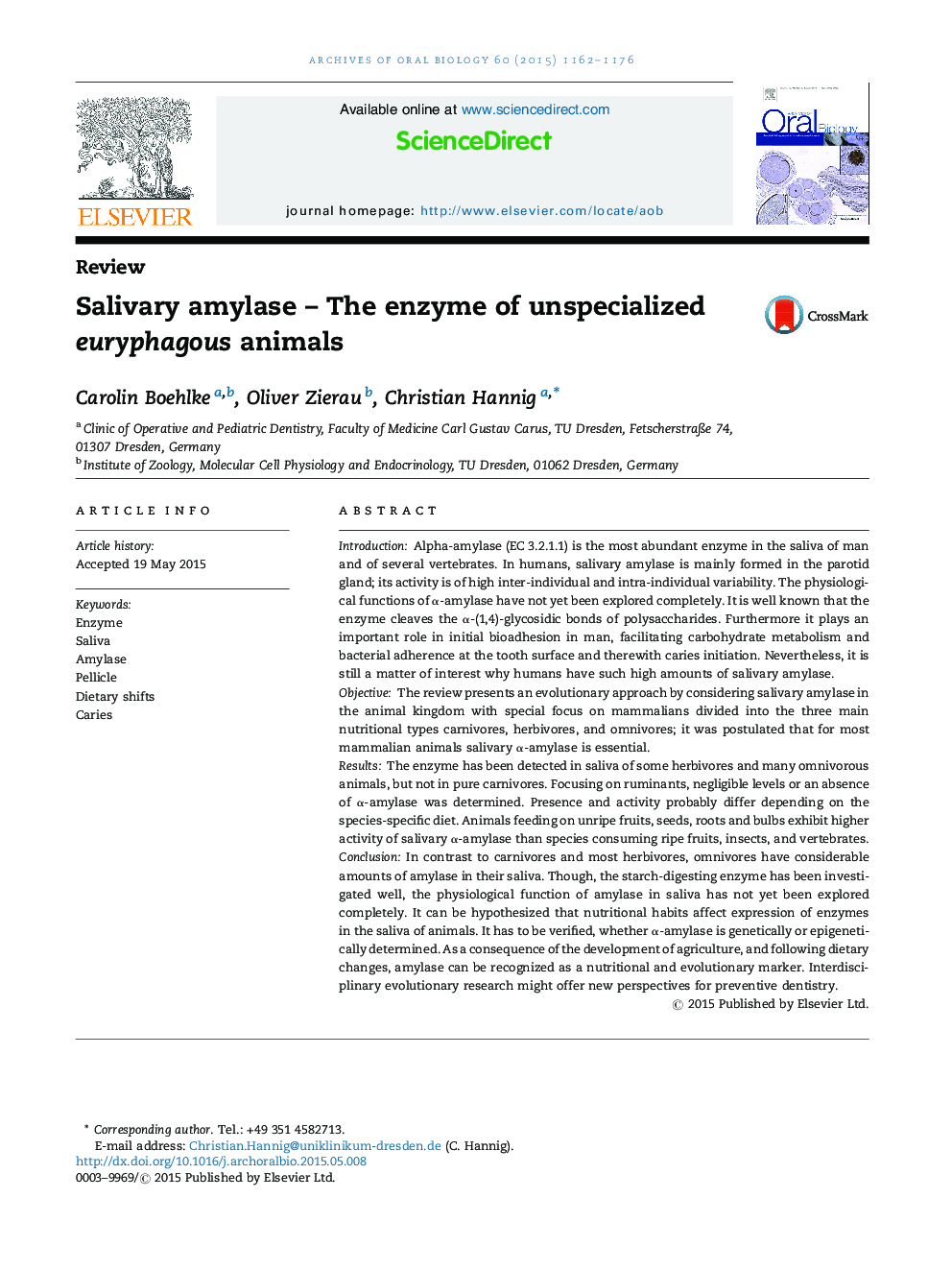| کد مقاله | کد نشریه | سال انتشار | مقاله انگلیسی | نسخه تمام متن |
|---|---|---|---|---|
| 3120754 | 1583297 | 2015 | 15 صفحه PDF | دانلود رایگان |

• Nutritional habits affect expression of enzymes in the saliva of animals.
• Amylase can be recognized as a nutritional and evolutionary marker.
• Omnivores have considerable amounts of amylase in their saliva.
• Carnivores and most herbivores have no or low amounts of amylase in their saliva.
• Physiological functions of α-amylase have not yet been explored completely.
IntroductionAlpha-amylase (EC 3.2.1.1) is the most abundant enzyme in the saliva of man and of several vertebrates. In humans, salivary amylase is mainly formed in the parotid gland; its activity is of high inter-individual and intra-individual variability. The physiological functions of α-amylase have not yet been explored completely. It is well known that the enzyme cleaves the α-(1,4)-glycosidic bonds of polysaccharides. Furthermore it plays an important role in initial bioadhesion in man, facilitating carbohydrate metabolism and bacterial adherence at the tooth surface and therewith caries initiation. Nevertheless, it is still a matter of interest why humans have such high amounts of salivary amylase.ObjectiveThe review presents an evolutionary approach by considering salivary amylase in the animal kingdom with special focus on mammalians divided into the three main nutritional types carnivores, herbivores, and omnivores; it was postulated that for most mammalian animals salivary α-amylase is essential.ResultsThe enzyme has been detected in saliva of some herbivores and many omnivorous animals, but not in pure carnivores. Focusing on ruminants, negligible levels or an absence of α-amylase was determined. Presence and activity probably differ depending on the species-specific diet. Animals feeding on unripe fruits, seeds, roots and bulbs exhibit higher activity of salivary α-amylase than species consuming ripe fruits, insects, and vertebrates.ConclusionIn contrast to carnivores and most herbivores, omnivores have considerable amounts of amylase in their saliva. Though, the starch-digesting enzyme has been investigated well, the physiological function of amylase in saliva has not yet been explored completely. It can be hypothesized that nutritional habits affect expression of enzymes in the saliva of animals. It has to be verified, whether α-amylase is genetically or epigenetically determined. As a consequence of the development of agriculture, and following dietary changes, amylase can be recognized as a nutritional and evolutionary marker. Interdisciplinary evolutionary research might offer new perspectives for preventive dentistry.
Journal: Archives of Oral Biology - Volume 60, Issue 8, August 2015, Pages 1162–1176